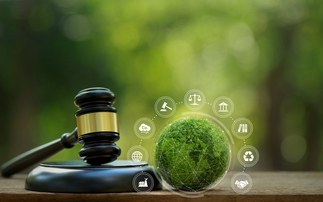Major UNFCCC carbon trading scheme hit by serious corruption allegations involving organised crime in Russia and Ukraine
A key carbon offsetting scheme was so open to abuse that three quarters of its allowances lacked environmental integrity, a new report says.
UN officials confirm the findings by the Stockholm Environment Institute that around 600 million tonnes of carbon were wrongly emitted as a result, under the UNFCCC's Joint Implementation (JI) scheme.
An estimated 80 per cent of JI projects were of low environmental quality, according to the paper which was published today in Nature Climate Change.
"Many of them didn't observe the requirements of JI on 'additionality' as they would probably have happened anyway, and I would even doubt the physical existence of some of these projects," said Vladyslav Zhezherin, one of the report's authors. "I would say that many of them were fake."
A senior UN official speaking on condition of anonymity told the Guardian that the new report was "thoroughly researched and probably correct."
JI had been beset by "significant criminal energy" in Russia and Ukraine, after the EU banned the trading of credits from an industrial gas scam on the Emissions Trading System (ETS) from April 2013, he explained. This led to a flood of what he called "almost completely bogus" credits in 2012.
"It was an outstretched middle finger to the EU saying 'You're shutting out our credits, we're flooding your markets', a mix of retaliation and crime," he said.
Another source with regulatory experience in Ukraine's JI market told the Guardian that, as the 2000s dragged on, JI increasingly came to be seen by market participants there as "a corruption mechanism."
"The approval of projects stopped depending on their quality but rather on connections and side payments," he said. To gain official approval for registration under the JI scheme, Ukrainian market participants often had to transfer ERUs to a limited number of intermediary companies in Switzerland, the source alleged.
Russia and Ukraine were the two biggest beneficiaries of the JI system, which allowed them to trade emissions reductions units (ERUs) 'proving' that carbon cuts had been made, for assigned amount units (AAUs) from rich world polluters, in the exotic lexicon of carbon trading.
But under the scheme's 'Track 1' - which covered around 97 per cent of projects - states only needed to verify reductions between themselves, without any UNFCCC oversight.
The eastern countries had been over-supplied with credits after the fall of the Soviet Union - but before its subsequent industrial collapse. They were also smarting at the withdrawal from the Kyoto protocol of their presumed main buyer, the USA.
A decision to flood the EU's carbon market with dud credits "was partly because of hurt feelings from having had no proper compensation," the UN source said.
He added: "This is what happens if you give free resources, or install a subsidy-like mechanism without proper oversight in failing states, or countries with significant corrupt structures."
The issue may well be discussed at climate talks in Paris, where the EU is pushing for oversight of future market-based mechanisms to be take out of the UNFCCC's hands.
The UN body is believed to prefer a reformed version of the scheme's ‘Track 2', for which it has oversight.
Anja Kollmuss, another of the study's authors, said the implications of the story for the EU emissions trading system (ETS) would be profound. "Almost two-thirds of JI credits were used in the ETS, so the poor overall quality of JI projects may have undermined the EU's emission reduction target by some 400 million tonnes of CO2, about a third of the reductions required by the ETS from 2013 to 2020," she said.
More than a quarter of JI carbon credits went to projects to staunch the spontaneous ignition of coal piles, mostly in Ukraine. The country's estimate that such waste piles produced roughly 30 per cent of its coal was "highly unrealistic" and probably led to substantial over-crediting, the report says.
The report found that only one of the six major project types in the JI system reduced emissions by more than would have happened anyway. This covered N20 abatement from nitric acid production, and was also the only project-type correctly supplied with ERUs.
JI is one of the three carbon offsetting schemes accredited by the Kyoto protocol - along with emissions trading and the clean development mechanism. It allowed some 872 million ERUs to be issued by ex-Soviet Union and Warsaw Pact countries, accounting for around a third of UN-accredited emissions allowances.
This article first appeared at the Guardian
BusinessGreen is part of the Guardian Environment Network







